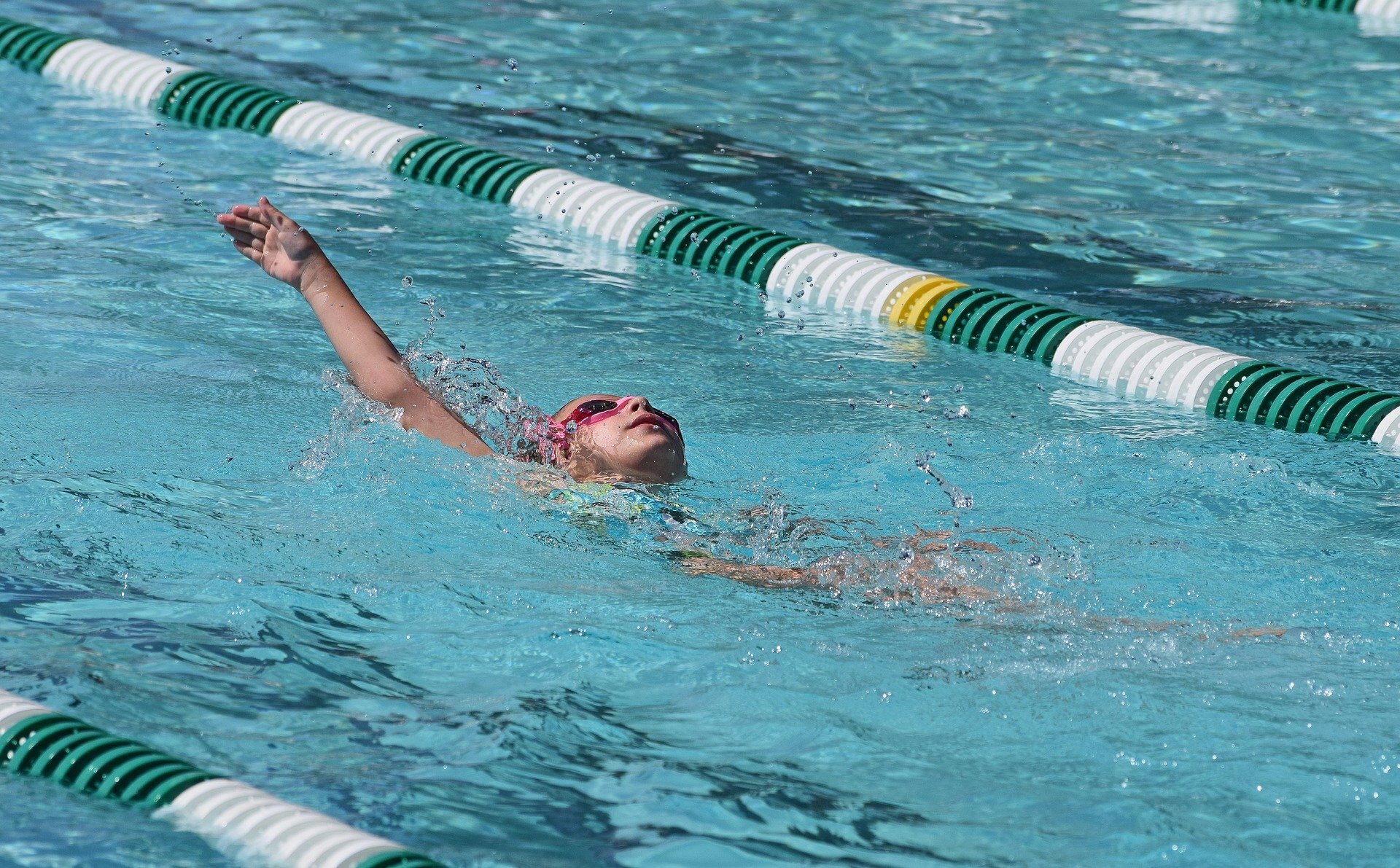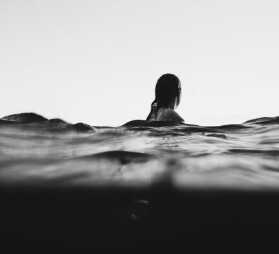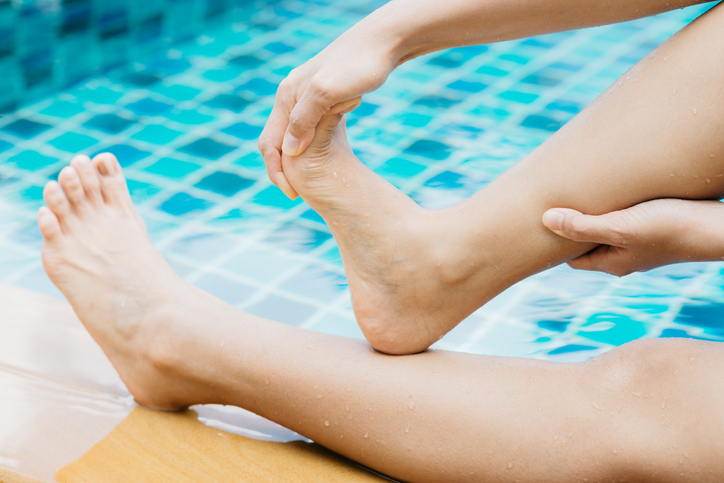When swimming for a prolonged period of time, muscle cramps are sometimes inevitable. They are unexpected, painful, and sometimes even a little scary! Once you know how to deal with a muscle cramp, you can learn how to get rid of them as quickly as they come, and then you can get right back to your swimming work-out.
What Causes Muscle Cramps during Swimming?
Did you know that you actually sweat a lot during a swim workout? It is impossible to tell since you are already in water, but your movement and the heat of the pool deck causes you to sweat quite a bit. If you are not drinking water while swimming, you might get dehydrated and that is one of the most common causes of cramps. I find it difficult to remember to stay hydrated while I am swimming, whether for a workout or even just for fun! To remind myself to drink water more often, I try to keep a full water bottle or sports drink right beside the pool deck, and I try to drink the whole thing by the time I finish! By doing this, I make sure I am drinking more water than I am expelling.
Where are Cramps Most Common?

Most of the time, I get foot cramps from doing the flutter kick. I am usually pointing my toes when I kick, so the cramps are caused by holding my foot in the same position for so long. At times, I can also get cramps in my shoulder. This usually only happens when I am swimming the same stroke for a long period of time, such as freestyle or backstroke.
When I am trying to swim fast for a long period of time without stopping, sometimes I get cramps in my side. These types of cramps are usually called side stitches. Typically, they go away quickly, but when they happen they usually come on fast and strong. Side stitches sometimes make it difficult to breathe, and it can be hard to continue swimming when these cramps occur.
Some other common areas where people can get cramps are: inner thigh during breaststroke, upper back during butterfly, or calf muscles while doing the flutter kick. People may get cramps in other areas, but these are the most common in my experience.
How to Prevent Cramps in Legs While Swimming
Cramps can be scary! They can be especially scary if you do not know what is going on or how to deal with them.
Stretch it out
Try to do some gentle stretching before starting to swim, and after you get out of the pool. Elongating your muscles will help them recover post-workout, and will help in cramp prevention.
Return to the wall
If you find yourself with a cramp while you are in the middle of the pool, try to get to a wall or lane line to hang onto for support. Dealing with a cramp in the middle of the pool while also staying afloat can be incredibly difficult, and can further agitate the cramp. Once you are able to find support, try to take a couple of minutes for a break to stretch. If you are experiencing one of the side stitches, try to take a couple of deep breaths and drink water. Only get back in the water and resume swimming when you feel safe and comfortable, you don’t want to get more cramps!
Take a break
If you find yourself continuously having cramps when you are in the pool, try to take a few days off! While exercising, rest is just as important as the exercise itself. Your body requires time to recover, especially if you might be feeling overworked.
What to do if you have a cramp at the beach?

We talked about what to do if you have a cramp while you’re in the pool, but what happens when you are in a lake or the ocean? That can be a bit scary if you do not know what to do next. If you are able, try to swim to the shore so you can stretch out the affected area. Sometimes when I have a foot cramp, I am even able to stretch it out while I am in the water if the waves are not too rough. If you are finding that you are not able to swim to the shore and are in too much pain, either wave your hands for the lifeguard to come give you assistance, or if somebody is with you, have them help you get to the shore. Cramps can be painful, and it is good to be prepared if you find yourself in the situation where you need help.
It is also incredibly important to make sure you have good stroke technique while swimming. If you are swimming the strokes in the wrong way, you could be incorrectly working your muscles and that could lead to injury with repeated use. One way to ensure great technique is to enroll in Sunsational Swim School. It is our duty to teach you the proper technique to your strokes, so you can stay healthy, safe, and active!
Olivia Darr’s bio:
Swim Instructor in Columbia, SC
Olivia is a part time competitive swim coach and teaches swimming lessons on the side in Columbia, South Carolina. She loves teaching kids how to love and feel safe in the water. Olivia has experience teaching students of all ages, from 10 months to adult. She is excited to help you discover your love of swimming!
ABOUT SUNSATIONAL SWIM SCHOOL
Sunsational Swim School is the 🥇 #1 rated provider of private, at-home swimming lessons in America. We have specialized swim instructors for students ages 6 months to adult, beginner to advanced. Featured on ABC, CBS, Impact 100, The List and others, Sunsational instructors have a minimum of 2 years of teaching experience, are CPR certified and insured, and have collectively taught over 302,223 lessons for more than 74,415 students nationwide!



